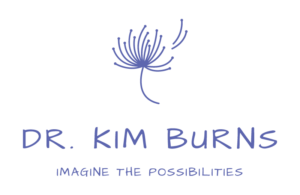Many of us are familiar with the SWOT analysis, which is an examination of an organization’s strengths, weaknesses, opportunities, and threats. SWOT is a common strategic planning tool, especially in corporate settings. The strengths and weakness of the organization are discussed and the opportunities and threats in the external environment are explored. From there, priorities, goals, tactics, and metrics are designed.
SOAR analyzes strengths, opportunities, aspirations, and results. In my experience, SWOT analyses can get a group mired in negative thinking, resulting in reduced energy and creativity. A SOAR analysis is future focused and can spark hope, create positive energy, and harness creativity. Jackie Stavros and Gina Hinrichs said it best in their book The Thin Book of SOAR, “Employees at all levels want to engage their minds, hearts, and spirits and feel as if their aspirations and achievements connect to their work.” SOAR integrates appreciative inquiry by engaging all members of the organization in dialogue. Rather than a few senior leaders engaging in a SWOT analysis, SOAR involves the whole system.
Ideally, all members of an organization are invited to participate in a strategic planning SOAR dialogue. In small groups, they are asked to consider the organization’s strengths, opportunities, aspirations, and results. Here are some sample guiding questions that could be used:
Strengths
- What are our organization’s strengths?
- What makes us unique?
- What are we most proud of as an organization?
Opportunities
- What opportunities exist for our organization to grow and change?
- What can we do more of?
- What can we do differently?
Aspirations
- If all our dreams could come true for our organization, what would we aspire to?
- What are our hopes for our organization?
- What do we wish for?
- What values do these aspirations represent?
Results
- If we set our aspirations as a goal, how will we know if we have been successful?
- What will the results look like when we achieve what we set out to do?
- What will you be able to see, feel, hear, do that would be different than it is now?
Beginning with a discussion of strengths focuses employees on what the organization does really well and what can be built upon. It is much easier to build on strengths than to rectify weaknesses. It also helps to differentiate the organization from competitors.
Opportunities can address external changes and threats as well as untapped talents, services, or audiences. A discussion of opportunities can get at what students and other stakeholders may be asking for that they aren’t currently getting. It hones in on external forces, both good and bad.
Aspirations tap into participants’ desires about the organization’s potential and how to best make a difference for the organization and its stakeholders. It taps into what employees care deeply about. Discussions of aspirations can also get at possibilities for innovation and improvement.
Focusing on strengths, opportunities, and aspirations does not ignore problems. Instead, challenges are reframed. How can we leverage what we do well to become even better and achieve top performance?
Lastly, results get people thinking about measurable outcomes that indicate success. This is the hardest part of the planning process. Tangible results help an organization determine if a strategic plan was successful. It’s just hard at the beginning of a planning process to identify what those tangible results might be.
SOAR dialogues engage the whole organization in co-creating a desired future steeped in collective values. These conversations honor participants and the knowledge, expertise, and experiences they bring to work every day and spark hope in the organization’s future.
Happy SOARing!
Connect with me at hello@drkimburns.com or on LinkedIn. You can also sign up for my newsletter.

